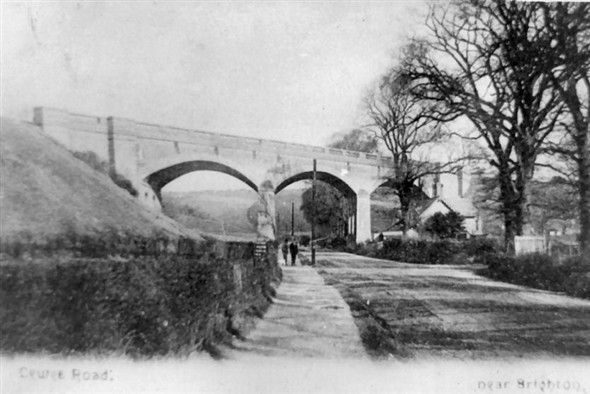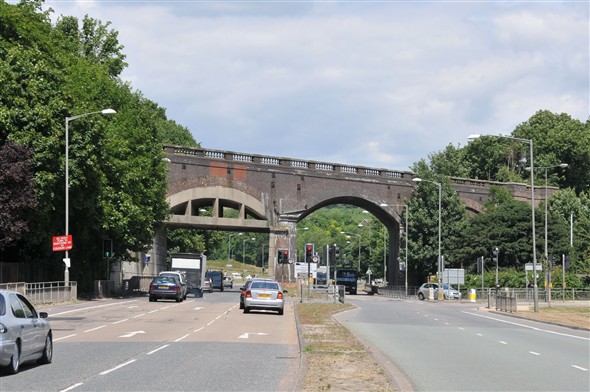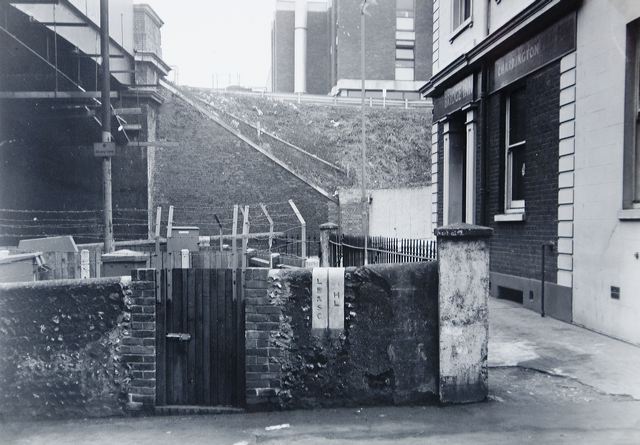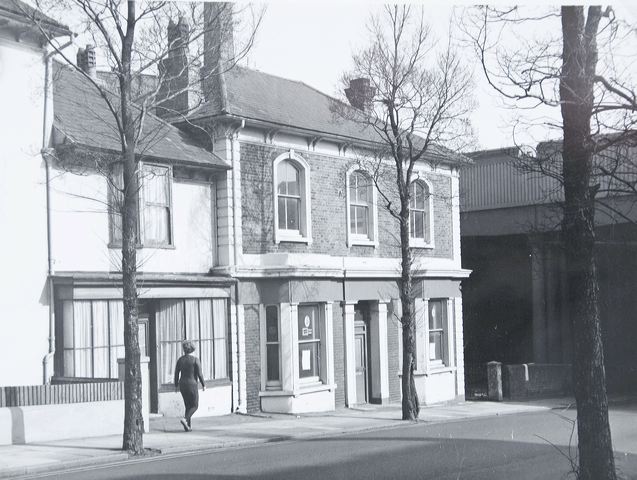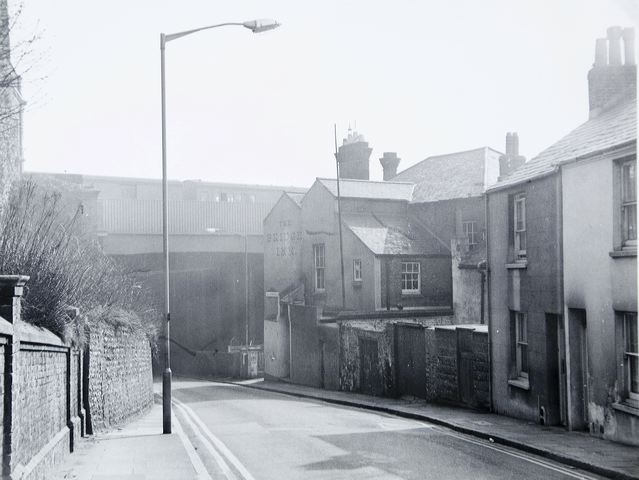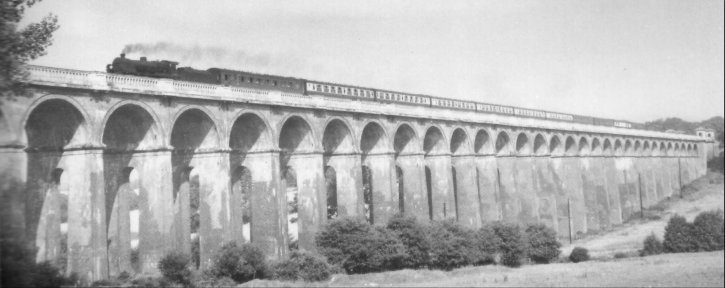(ABOVE & BELOW):
These three views show the Skew Bridge across Lewes Road at Moulsecoomb. The bridge
has undergone a lot of changes since the original was built (lino print at top).
In 1910 the two arches either side of the main span were bricked in to
strengthen the bridge as seen in the right-hand span in the picture below. In
1967 the left hand span was opened up and reinforced with the concrete archway
as shown, which totally imbalances the look of the bridge, but was entirely
necessary for the dual carriageway to be constructed. In recent years, the
junction is controlled by a particularly traffic-unfriendly set of traffic
lights but the scene remains relatively unchanged.
Image credits: Images owned by R.Mitchell/V.Mitchell, www.mybrightonandhove.co.uk
New England Tunnel, New England Road, Brighton
(ABOVE & BELOW): These
two views show the bridge across New England Road before it was swallowed up
in housing development. The photo above hasn’t changed much to date; the little
signal box (top right) has long gone, as have the trees in the centre. A
traffic junction stands where the trees were, at the merge of New England and Old Shoreham Roads.
Part of the brick wall remains and forms the enclosure for an electrical
substation in the present day. The 2nd photo below shows the view in
the other direction. Beyond the main bridge can be seen the bridge that would
eventually carry the line to the lower goods yard, and above that, undeveloped
land up to Ditchling Road and a few houses along the its path. The windmill on
the horizon would eventually become the site for Roundhill Street, named after the small
mound the mill was constructed on. The Corner of the huge engineering works is
visible top right hand corner.
O.J.Morris / E.R.Lacey collections
(ABOVE): Another very impressive but rather overlooked masterpiece on the London to Brighton line is the Ouse Valley Viaduct, shown above. Each
of the 37 piers has a different height aperture in it. Most of the millions of
bricks used were bought from temporary brickfields along the River Ouse by
small barges. Just visible at the far right hand end is one of the 4 ornate
little temples, which mark the corners of the viaduct.
Image owned by J. Scrase
These two pictures (ABOVE & BELOW) show the portals of the 2260-yard long Clayton
Tunnel, which carries the London to Brighton Main Line through the South Downs. The highly ornate North
Portal is shown above. For some strange reason, a bungalow has been built
between the turrets adding a weird touch of domesticity to a scene that would
be nicely rounded by the inclusion of a portcullis. The Southern portal shown
below is a little dull by comparison. Note the tiny signal cabin and its
stovepipe on the left side. The tunnel was the scene of a horrific pile-up
after the signal flag was not seen in dense fog. Ghosts of those killed in the
accident are said to haunt the little bungalow after the corpses were laid
there for recognition. Another relatively unknown fact is that there is a smaller tunnel that runs from the rear of the bungalow and goes down alongside the main tunnel. This was originally constructed to aid the construction of the main bore. My good friend and fellow explorer Dumpman has produced a thoroughly exhaustive video on this location, which I recommend as massively compelling viewing.
Image credits: images owned by S.W. Stevens-Stratten / D. Cullum

